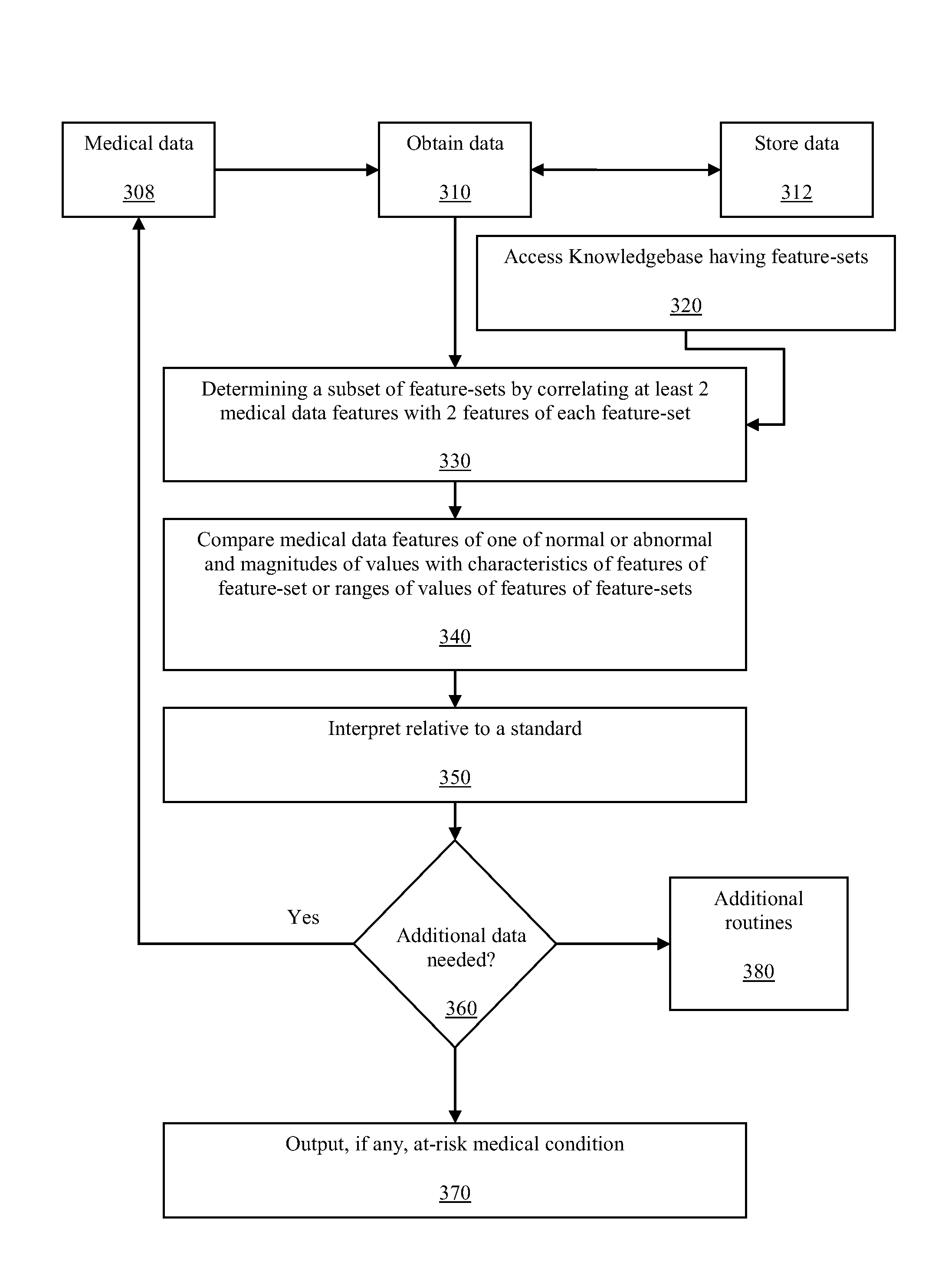Automated management of medical data using expert knowledge and applied complexity science for risk assessment and diagnoses
a technology of complexity science and medical data, applied in the field of complexity science and expert knowledge to analyze medical data, can solve the problems of insufficient statistical independence or association to demonstrate cause or clinical utility for risk prediction, and the individual's response to therapy or the degree of preexisting disease burden is uncertain, and achieves the effect of increasing the association level
- Summary
- Abstract
- Description
- Claims
- Application Information
AI Technical Summary
Benefits of technology
Problems solved by technology
Method used
Image
Examples
Embodiment Construction
[0022]The description includes reference to the accompanying drawings. The invention may be embodied in many different forms and should not be construed as limited to the embodiments set forth herein. Rather the illustrated embodiments are provided so that this disclosure is thorough and complete, and fully conveys the scope of the invention to those skilled in the art. Like numbers refer to like elements throughout.
[0023]As will be appreciated by one of skill in the art, the embodiments described herein are a method, a data processing system, a computer program product and a service that maintain a knowledgebase 140, a plurality of associative algorithms 150 and a plurality of feature-sets 160 each having a set of highly-associated features that identify a medical condition and that apply one or more associative algorithms that are applied to evaluate the input medical data representing the magnitude of the features, wherein an individual's risk of a medical condition or disease is...
PUM
 Login to View More
Login to View More Abstract
Description
Claims
Application Information
 Login to View More
Login to View More - Generate Ideas
- Intellectual Property
- Life Sciences
- Materials
- Tech Scout
- Unparalleled Data Quality
- Higher Quality Content
- 60% Fewer Hallucinations
Browse by: Latest US Patents, China's latest patents, Technical Efficacy Thesaurus, Application Domain, Technology Topic, Popular Technical Reports.
© 2025 PatSnap. All rights reserved.Legal|Privacy policy|Modern Slavery Act Transparency Statement|Sitemap|About US| Contact US: help@patsnap.com



